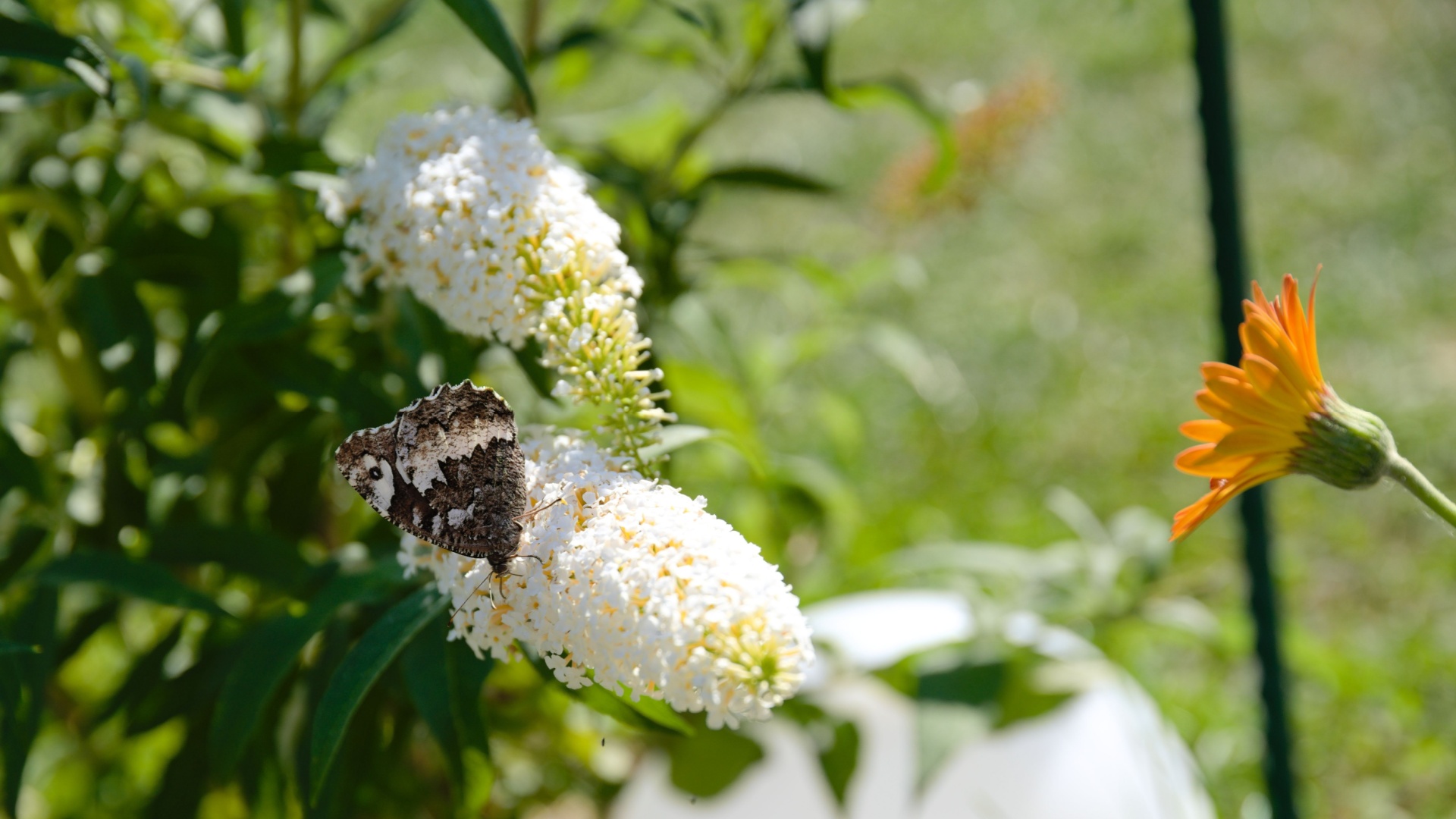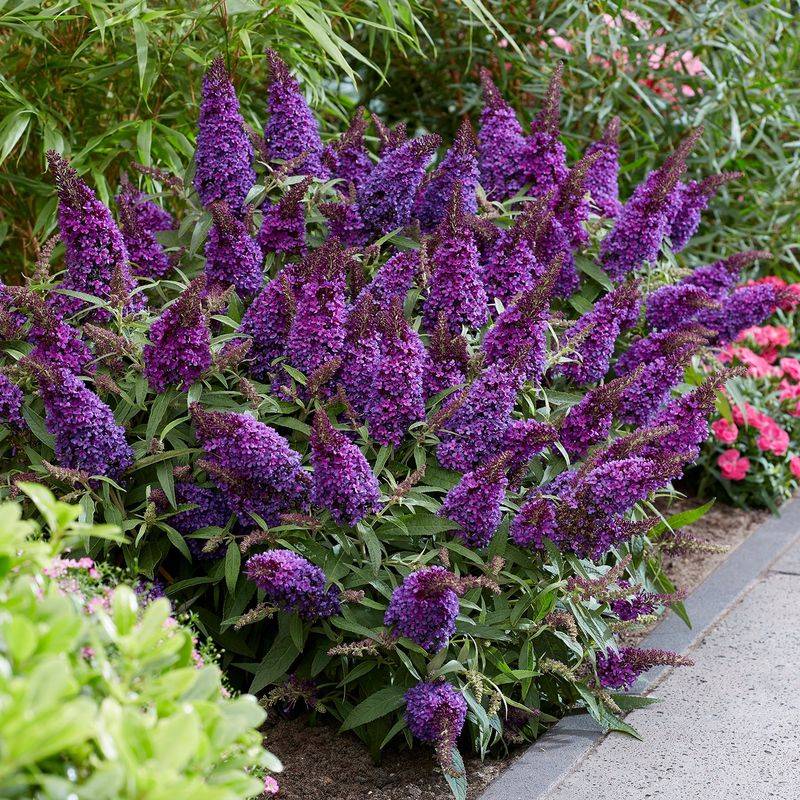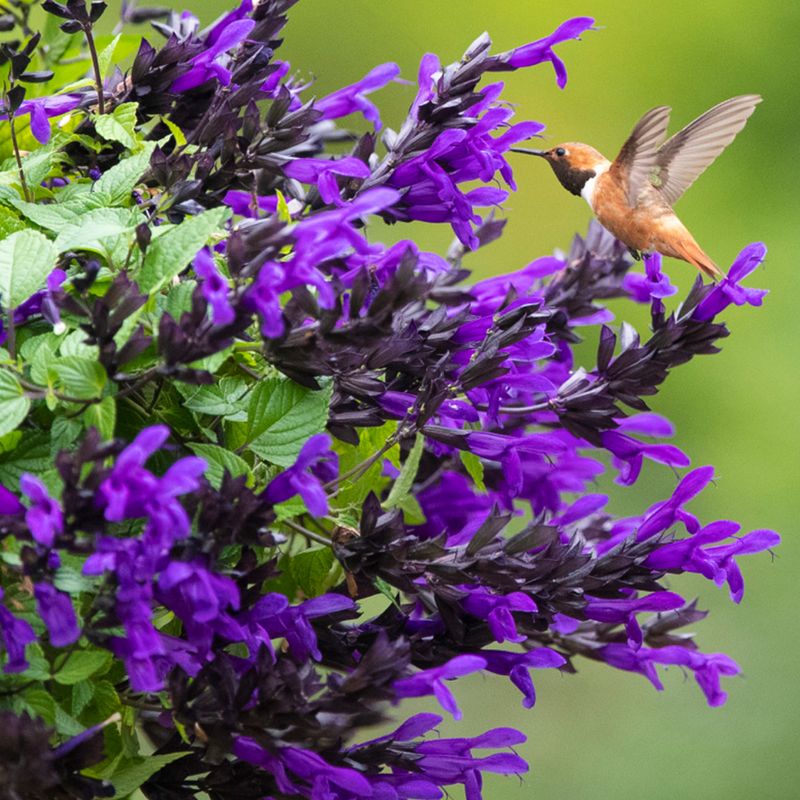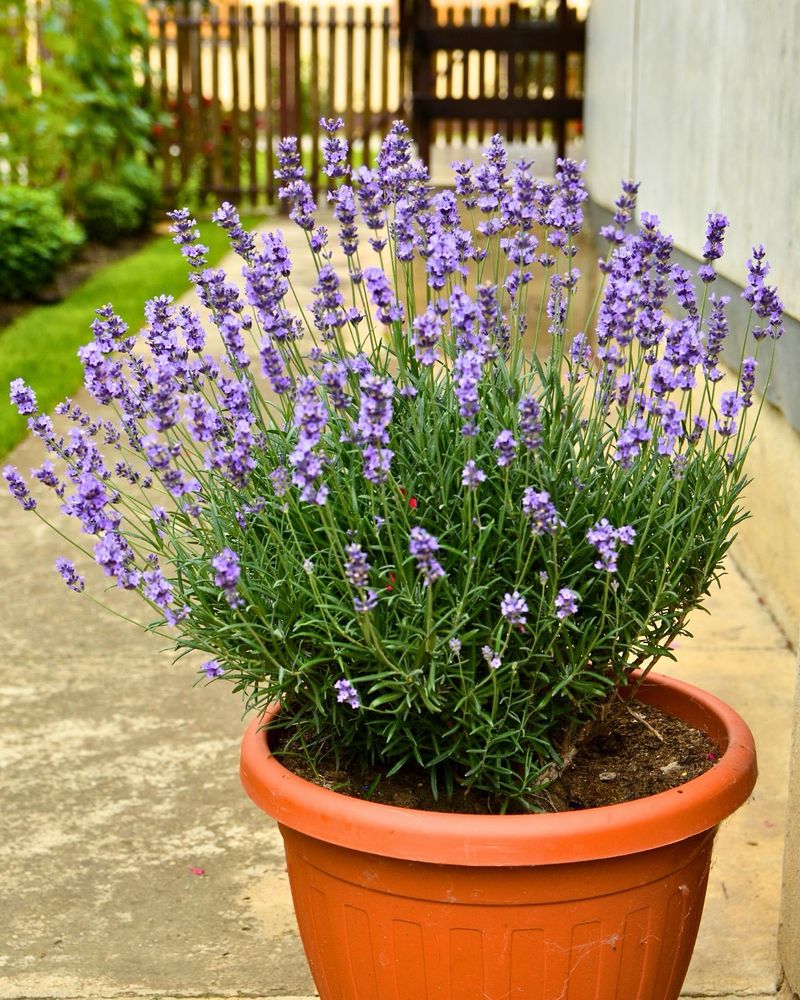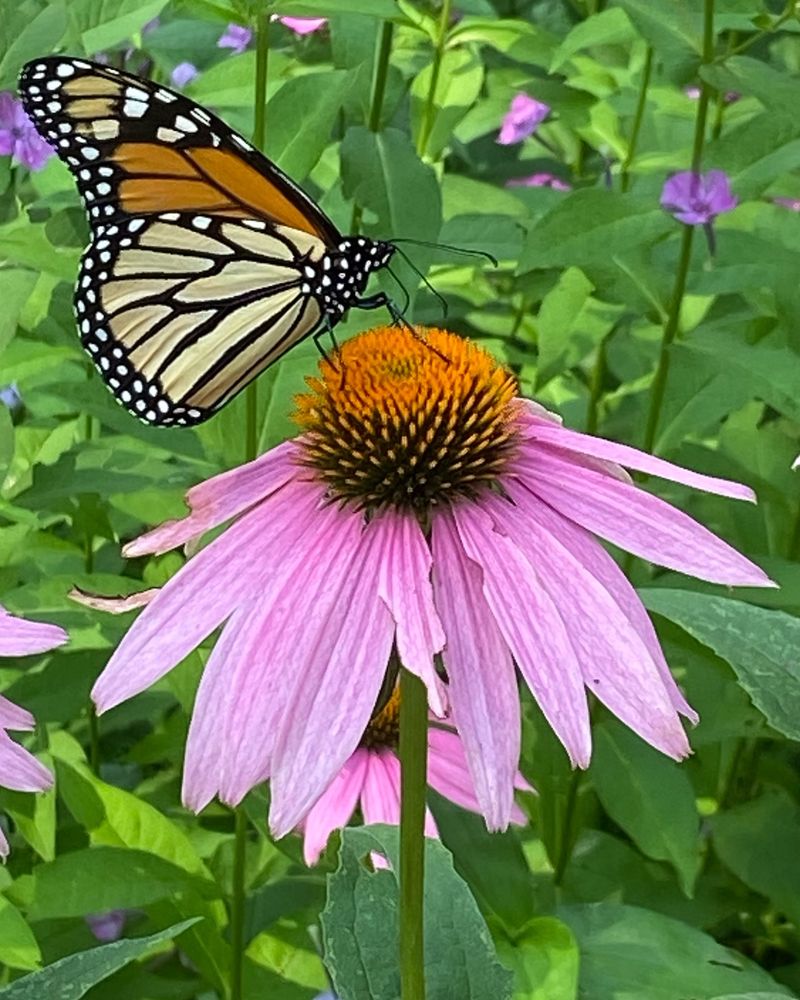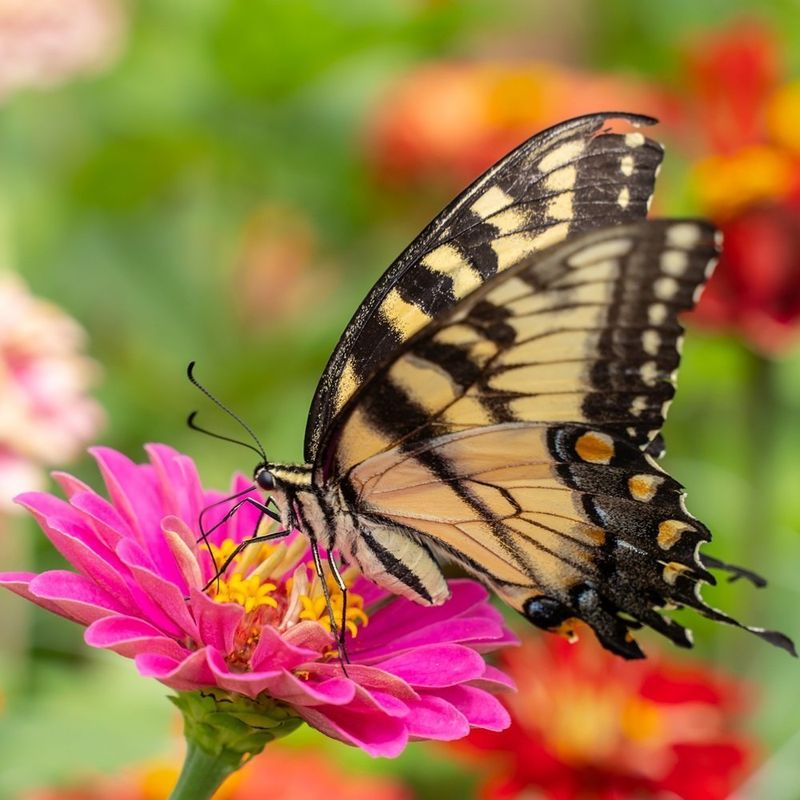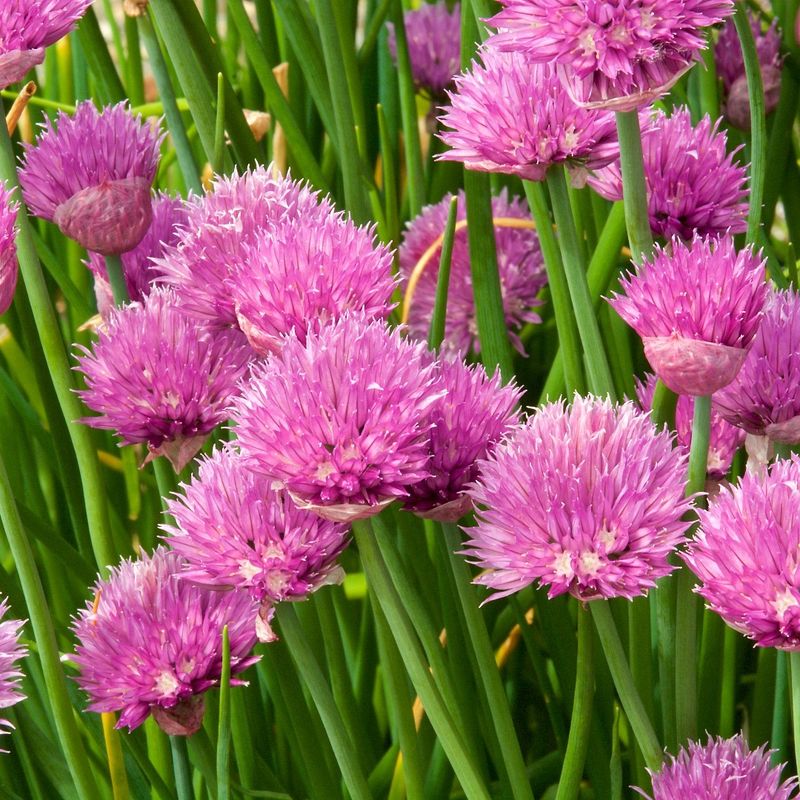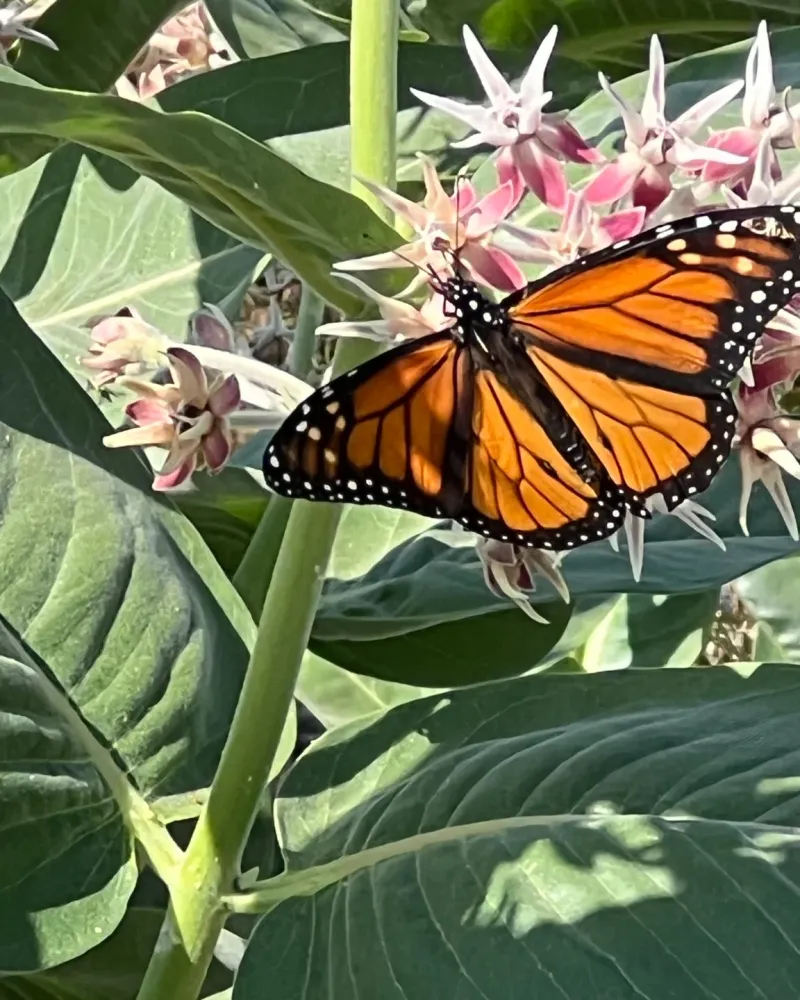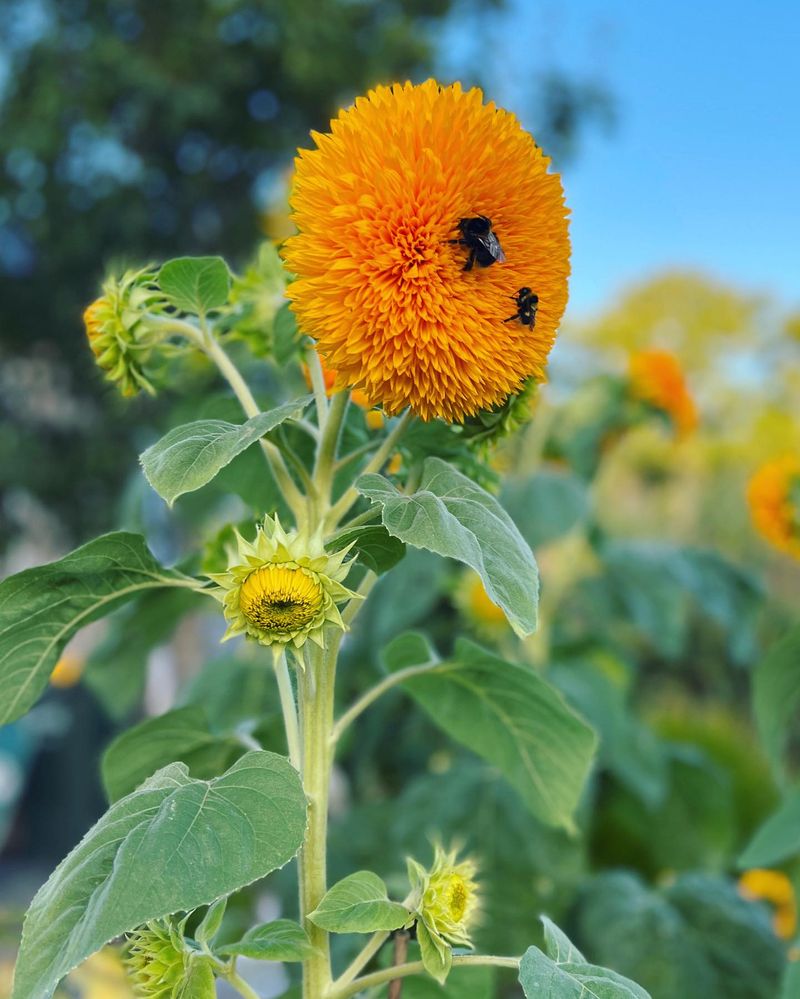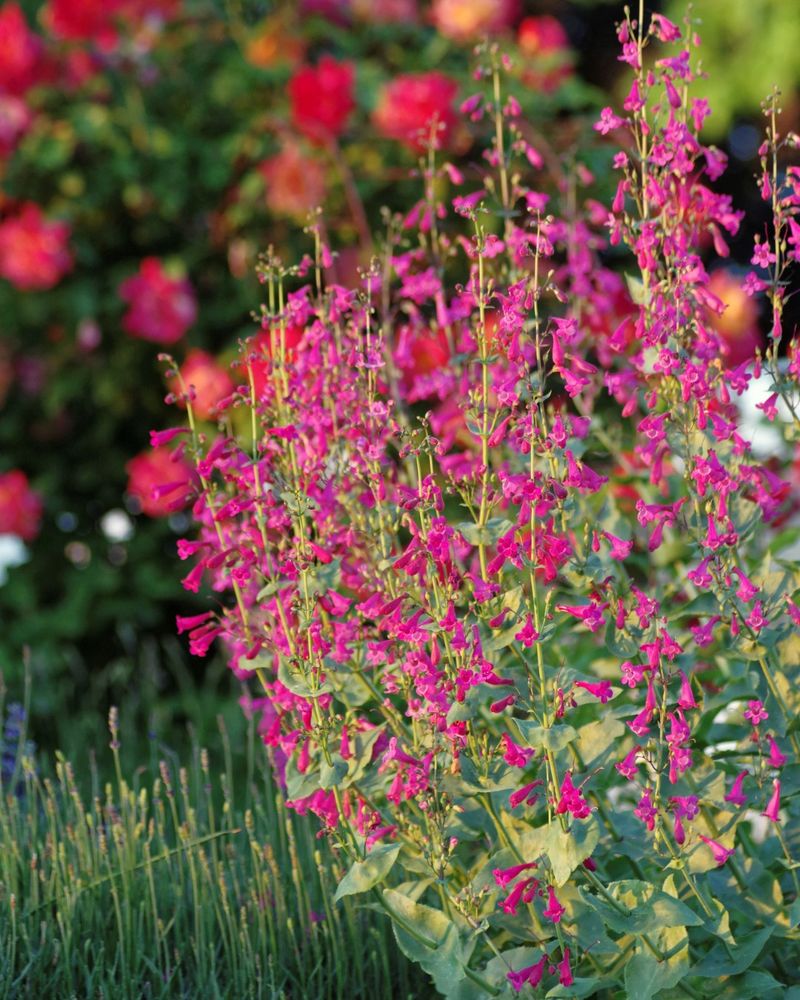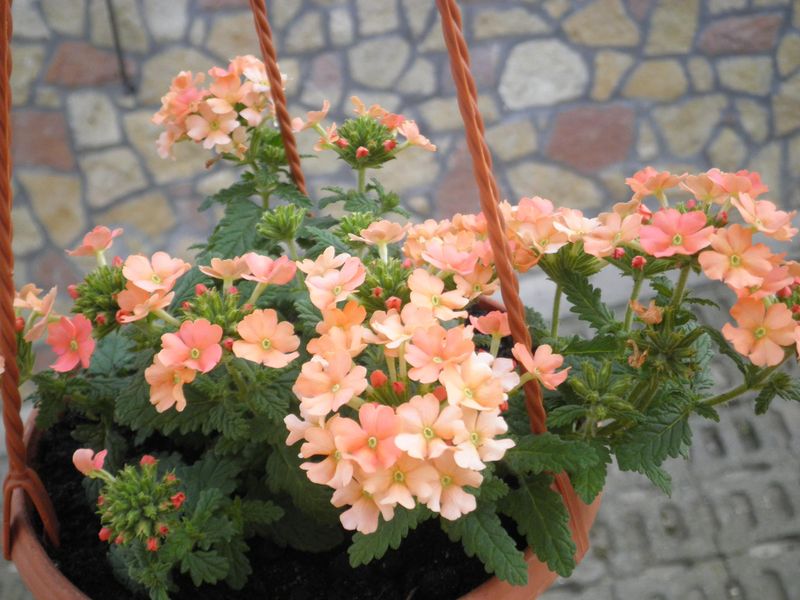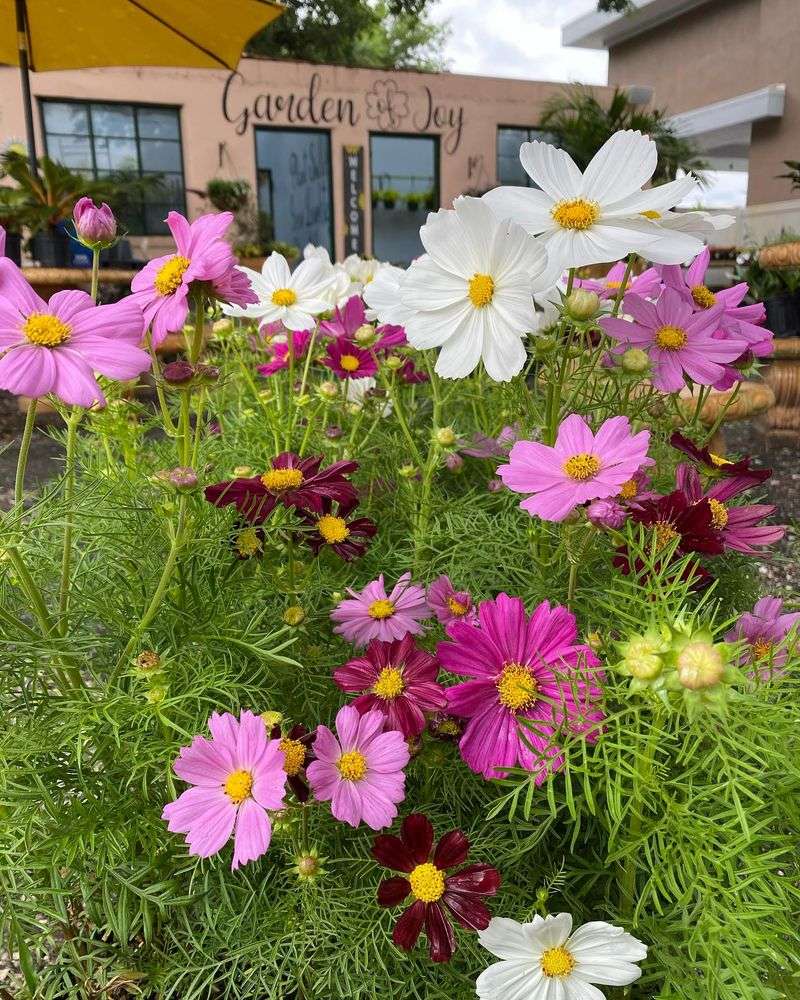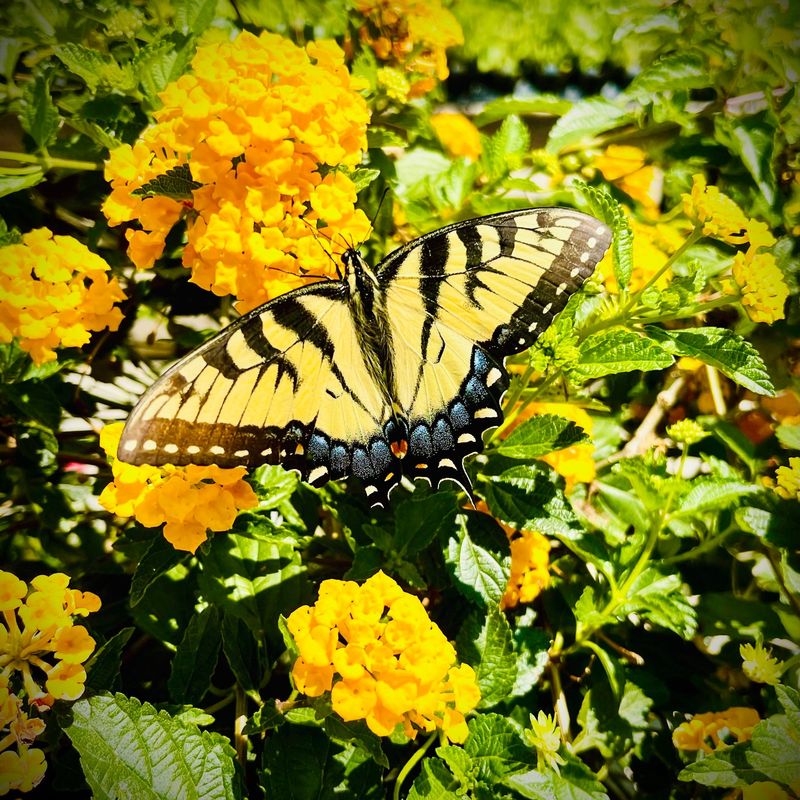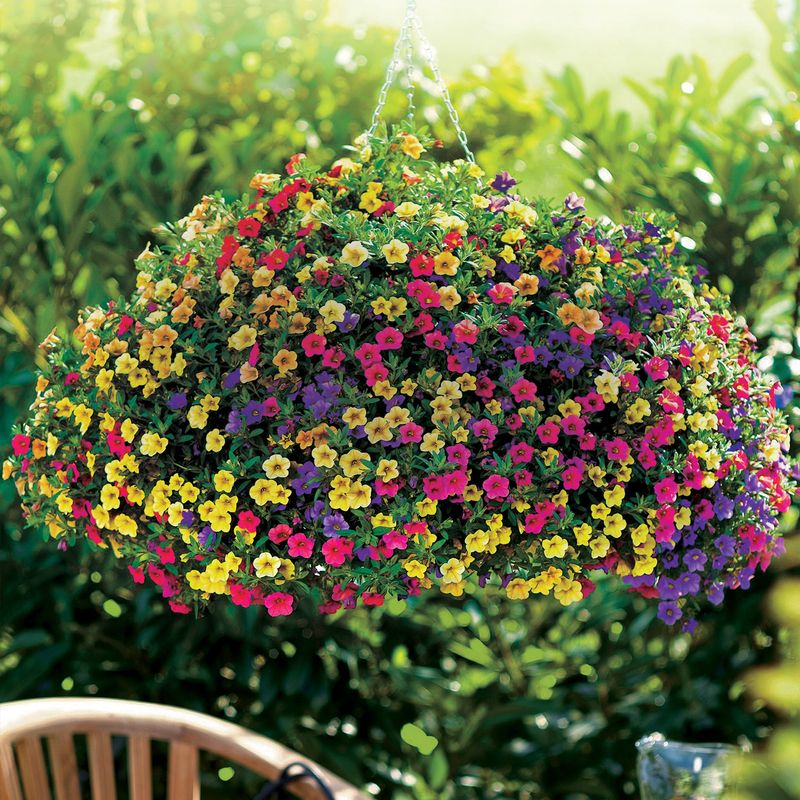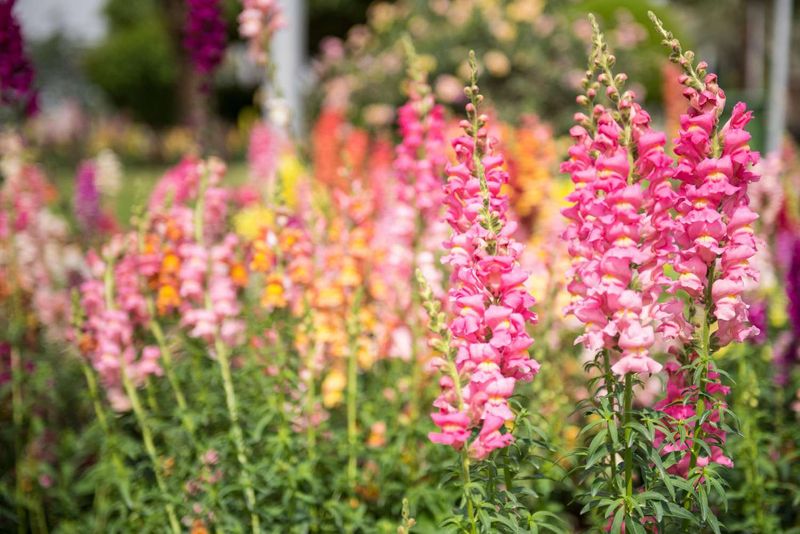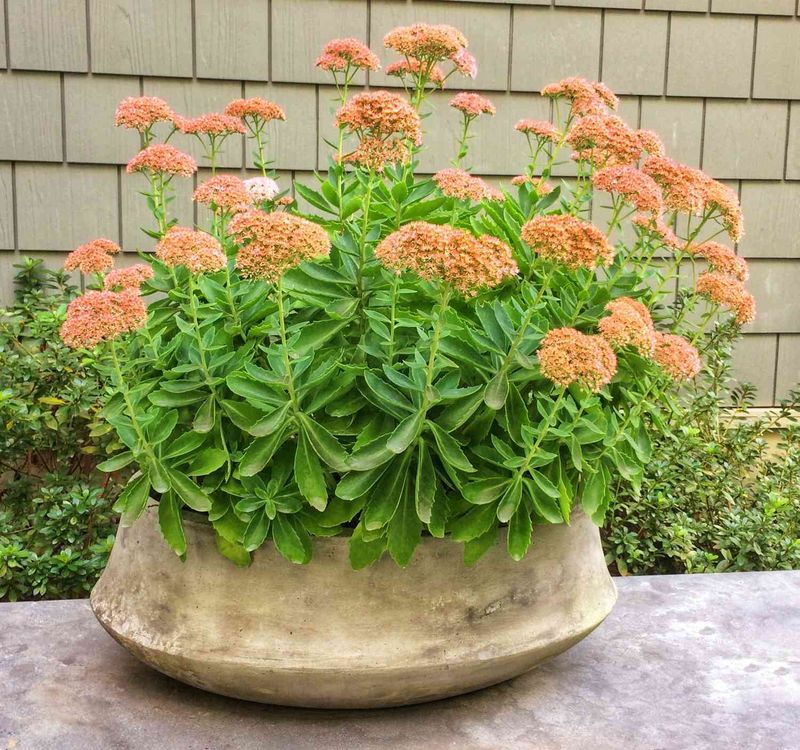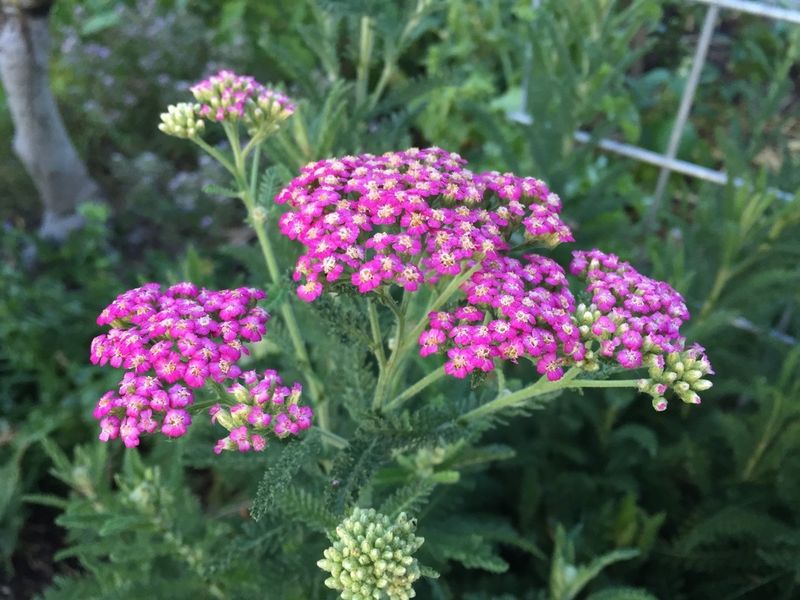Want to bring bees, butterflies, and hummingbirds to your yard without all the upkeep? Pollinator pots are an easy way to create a vibrant, buzzing garden—no matter how much space you have.
These 16 container combos are beautiful, low-maintenance, and full of life. Just plant, place, and let nature do the rest.
1. Butterfly Bush Bonanza
Compact butterfly bushes thrive in large containers, creating a pollinator paradise right on your porch. Their sweet fragrance and cone-shaped purple blooms act like magnets for butterflies from miles around.
Choose dwarf varieties like ‘Blue Chip’ or ‘Pink Micro Chip’ that won’t outgrow their pots. The flowers appear from summer until frost with minimal deadheading required. Simply trim back in spring and provide full sun for best results.
2. Salvia Spectacular
Salvias rank among the most reliable pollinator plants for containers. Their tubular flowers in shades of blue, purple, and red are irresistible to both hummingbirds and bees throughout the growing season.
Many varieties like ‘Hot Lips’ or ‘Black and Blue’ are drought-tolerant once established, meaning less watering for you. Plant in well-draining soil and place in a sunny spot. A light trim after the first bloom encourages a second flush of flowers.
3. Lavender Lane
Lavender’s silvery foliage and purple blooms make it a showstopper in any container. Bees absolutely love the fragrant flowers, which appear throughout summer with minimal care.
English varieties like ‘Hidcote’ or ‘Munstead’ adapt well to pot life. The key to success is excellent drainage—mix regular potting soil with some sand or small gravel. Place in full sun and water only when the soil feels dry to prevent root rot.
4. Coneflower Collection
Echinacea (coneflowers) bring reliable color and loads of pollinators to container gardens. Their daisy-like blooms with raised centers provide landing pads for butterflies and food for native bees.
Modern varieties come in sunset colors from pink to orange and yellow. The plants need at least 6 hours of sun daily and prefer being slightly root-bound in containers. Deadheading spent flowers extends the blooming season, but leaving some seedheads provides food for birds in fall.
5. Zinnia Zoom
Nothing beats zinnias for fast-growing, pollinator-friendly container plants. From seed to flower takes just weeks, creating instant habitat for bees, butterflies, and even hummingbirds.
Shorter varieties like ‘Profusion’ or ‘Zahara’ work perfectly in pots without getting leggy. The bright, daisy-like flowers bloom continuously from early summer until frost if deadheaded regularly. For a stunning display, mix several colors in one large container and place in full sun.
6. Herb Haven
Flowering herbs create dual-purpose containers that attract pollinators while providing kitchen harvests. Oregano, thyme, mint, and chives all produce tiny flowers that bees find irresistible.
Group herbs with similar water needs together in one pot. Allow some stems to flower while harvesting others for cooking. The soft blue flowers of rosemary and the purple blooms of chives are especially attractive to beneficial insects, turning your herb pot into a buzzing ecosystem.
7. Milkweed Magic
Monarch butterflies depend on milkweed for survival, making it a must-have in pollinator pots. The swamp milkweed variety (Asclepias incarnata) adapts beautifully to container life with its compact growth habit.
The pink flower clusters not only feed adult butterflies but provide the only place monarchs lay eggs. Plant in a deep container with drainage holes and rich potting mix. The plants return reliably each spring in most climate zones with minimal care.
8. Sunflower Surprise
Dwarf sunflower varieties bring big pollinator power to small spaces. Their bright yellow petals and dark centers serve as natural landing pads for bees while creating cheerful container displays.
Varieties like ‘Teddy Bear’ or ‘Sunspot’ grow just 1-2 feet tall, perfect for pots. Plant seeds directly in containers filled with rich potting soil after all danger of frost has passed. The flowers track the sun throughout the day, so position where you can enjoy their sunny faces.
9. Penstemon Paradise
Penstemons offer tubular flowers that hummingbirds simply can’t resist. These North American natives thrive in containers and produce blooms in shades from white to deep purple throughout summer.
The upright growth habit makes them perfect centerpieces for container arrangements. Plant in well-draining soil and water when the top inch feels dry. Deadheading spent flower stalks encourages reblooming, though some gardeners leave a few to form interesting seedheads for winter interest.
10. Verbena Vessel
Trailing verbena creates cascades of butterfly-friendly flowers perfect for hanging baskets or container edges. The flat-topped flower clusters in purple, pink, or white serve as landing pads for pollinators of all kinds.
Varieties like ‘Superbena’ or ‘Homestead Purple’ bloom non-stop from spring through fall with minimal care. The plants tolerate heat and drought once established, making them perfect for busy gardeners. Position in full sun for best flowering and allow soil to dry slightly between waterings.
11. Cosmos Container
Cosmos create airy, dancing displays in containers while attracting bees and butterflies with their open-faced flowers. Their ferny foliage adds texture even before the pink, white, or magenta blooms appear.
Shorter varieties like ‘Sonata’ reach just 2 feet tall, perfect for pots. Sow seeds directly in containers filled with lightweight potting mix after frost danger passes. The plants bloom within weeks and continue until frost with no deadheading required, making them truly low-maintenance pollinator magnets.
12. Lantana Luxury
Lantana creates a butterfly bonanza in containers with its multicolored flower clusters that often change hue as they age. The plants bloom continuously from spring until frost without deadheading.
Heat-loving and drought-tolerant, lantana thrives when other container plants wilt. Choose compact varieties like ‘Bandana’ or ‘Lucky’ for containers. The plants need full sun and well-draining soil. In mild climates, they act as perennials; elsewhere, treat them as spectacular summer annuals.
13. Calibrachoa Carousel
Million bells (Calibrachoa) create pollinator magnets in hanging baskets with their prolific, petunia-like blooms that hummingbirds adore. The flowers appear in virtually every color and pattern imaginable.
Unlike their petunia cousins, calibrachoa flowers don’t get sticky or require deadheading. The plants form neat mounds that cascade over pot edges beautifully. Water when the top inch of soil feels dry and feed regularly with bloom-boosting fertilizer for continuous flowers from spring through fall.
14. Snapdragon Sensation
Snapdragons bring vertical interest to pollinator pots with their spikes of dragon-shaped blooms that bumblebees love. The flowers come in every color except true blue and bloom heavily in spring and fall.
Shorter varieties like ‘Snapshot’ or ‘Twinny’ work best in containers. The plants prefer cooler weather, making them perfect for early season color before summer heat arrives. Deadheading spent flower spikes encourages reblooming and prevents self-seeding, keeping your containers looking fresh.
15. Sedum Showcase
Sedums (stonecrop) create pollinator heaven in fall when many other plants have finished blooming. Their flat-topped flower clusters in pink, red, or white attract butterflies and bees in droves.
Upright varieties like ‘Autumn Joy’ or ‘Brilliant’ work wonderfully in containers. The succulent foliage looks attractive all season before the late-summer blooms appear. Plant in well-draining soil and water sparingly – these drought-tolerant plants actually flower better with some neglect.
16. Yarrow Yearning
Yarrow creates flat landing platforms perfect for butterflies and beneficial insects in container gardens. The ferny foliage adds texture while the flower clusters in gold, white, or pink provide long-lasting color.
Compact varieties like ‘Little Moonshine’ or ‘Sassy Summer’ stay tidy in pots. The plants laugh at heat and drought once established. Deadhead spent flowers to prevent self-seeding and encourage more blooms. Even when not flowering, the aromatic foliage adds fragrance when brushed against.

